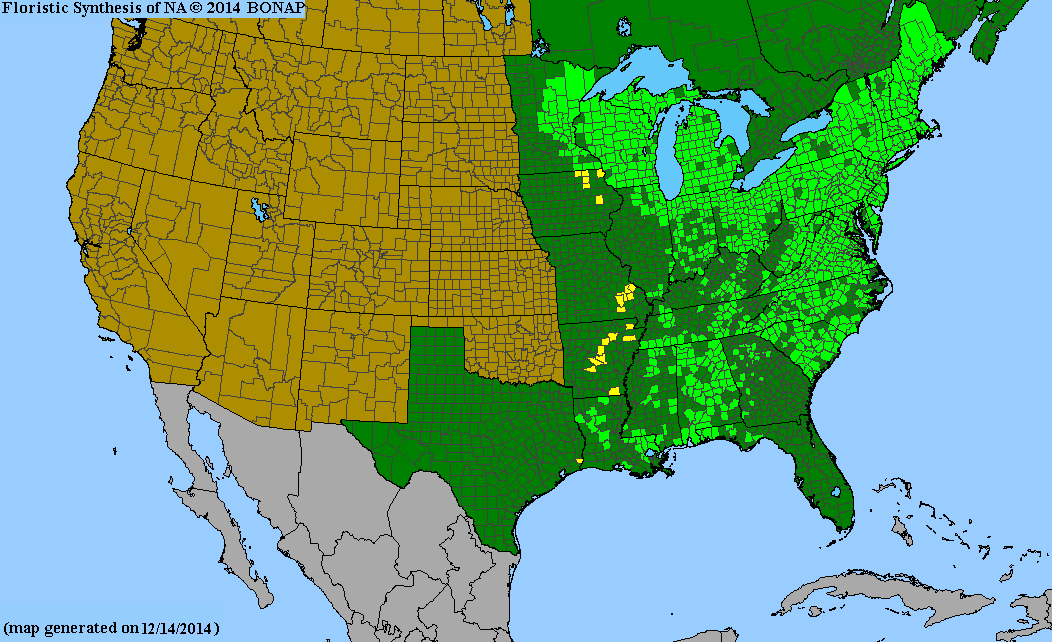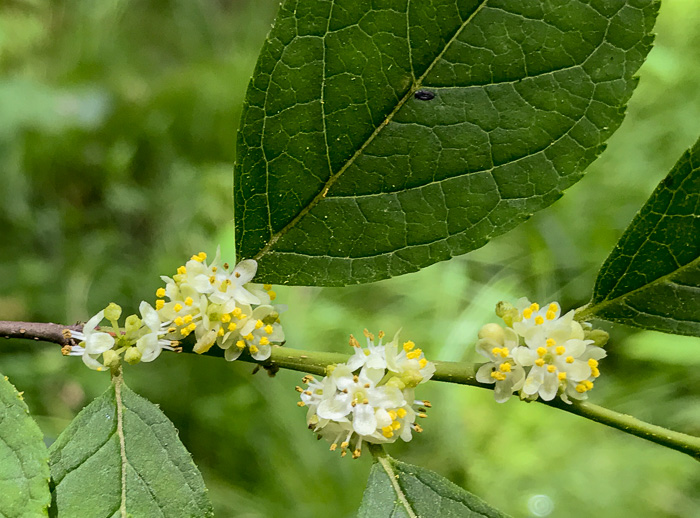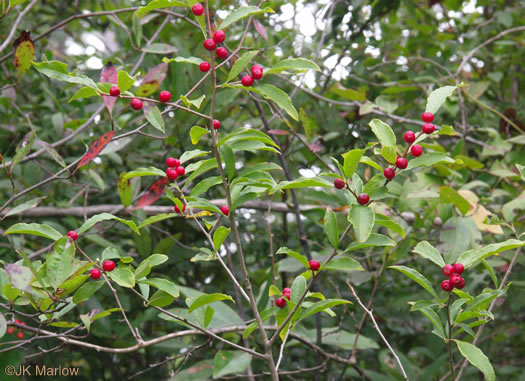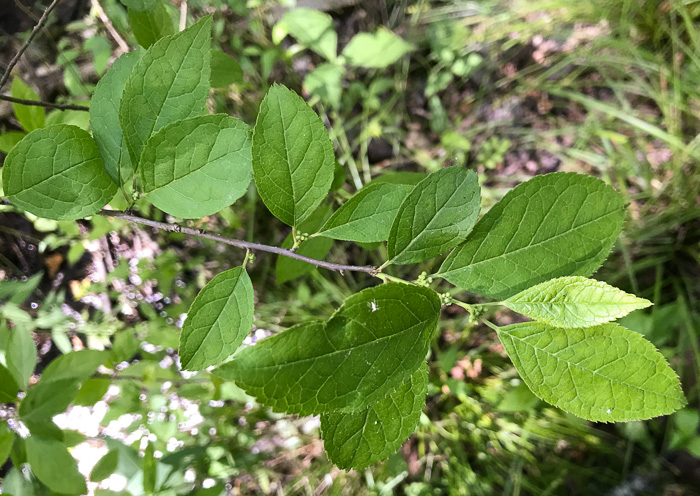Aquifoliaceae
winterberry holly
Ilex verticillata
Synonyms
Prinos verticillatus
Other Common Names
black alder, swamp winterberry
Plant Type
Shrub (less than 10 ft)
Life Cycle
Perennial
Typical Size
3-15 ft. tall
3-12 ft. wide
Tolerant of
Deer, Drought, Occasional Flooding
Propagation
By cutting
Plant Propagation Notes
Three to 4 inch softwood cuttings can be taken in early summer.
Plant Planting Notes
Provide at least 3′ spacing.
Plants/Diseases
No serious issues. May exhibit leaf spot or powdery mildew occasionally. Chlorosis may occur in soils that are too alkaline.
Wildlife Benefits
Nectar/pollen source for pollinating insects, Fruit/seeds for birds
Leaves
The simple, alternate leaves are oblanceolate, oblong, or obovate with serrate margins. Approximately 1.5-4 inches long.
Flowers
Small clusters of flowers grow from the leaf axils. Approximately 1/4 inch wide.
Fruit
Long lasting round drupes, about 1/4 inch diameter.
Bark
Gray to dark brown with knobby lenticels.
Toxicity
Low toxicity that may cause vomiting or diarrhea if ingested.

USDA Hardiness Zones
3, 4, 5, 6, 7, 8, 9
Light Exposure
Full Sun, Part Sun/Shade, Full Shade
Soil Moisture
Moist
Soil Drainage
Well-drained
Soil pH
Acidic (less than 6.0), Neutral (6.0-8.0)
Native in South Carolina?
Yes
Plant Native Habitat
Bogs, pocosins, swampy forests.
Global Conservation Status (NatureServe)
Secure (G5)
Federal Conservation Status (USFWS)
Not Listed
Distribution Notes
Common throughout South Carolina



